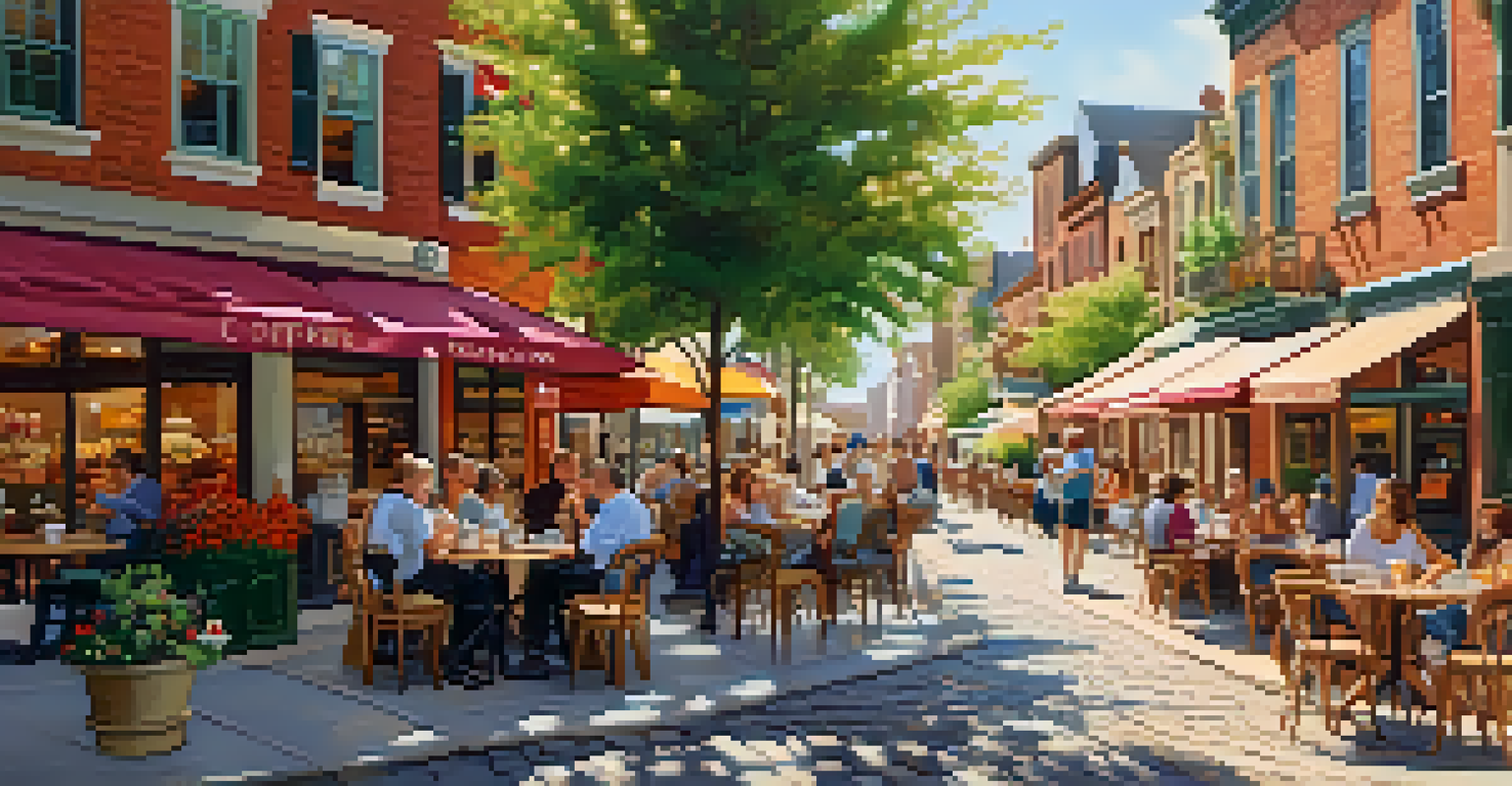The Future of Historic Properties in Urban Development

Balancing Preservation and Progress in Urban Areas
In an era of rapid urbanization, there's a critical need to balance the preservation of historic properties with the demands of modern development. Cities are evolving, but this growth shouldn't come at the expense of our cultural heritage. By integrating historic sites into new urban plans, we not only retain our sense of identity but also attract tourism and investment.
Preservation of our heritage is not a luxury; it is a necessity for our future.
Preserving historic buildings can serve as a blueprint for sustainable development. These structures often embody craftsmanship and materials that are not only beautiful but also resilient. By refurbishing rather than demolishing, cities can reduce waste and promote eco-friendly practices, aligning with modern sustainability goals.
Moreover, preserved historic properties can create vibrant communities that foster social interaction. Think about a beautifully restored theater or a quaint café in a historic district—these spaces encourage people to gather and engage with one another, enriching urban life.
The Role of Technology in Historic Preservation
Advancements in technology are revolutionizing how we preserve and interact with historic properties. Tools like 3D scanning and virtual reality allow us to document structures in unprecedented detail, making it easier to restore them accurately. This not only helps in preservation efforts but also engages the public in meaningful ways.

Additionally, smart technology is being integrated into historic buildings to enhance their functionality without compromising their integrity. Imagine a historic library with automated climate control to protect rare books or a museum using augmented reality to provide interactive tours. These innovations bridge the gap between the past and the future.
Preservation Promotes Community Growth
Integrating historic properties into urban development fosters vibrant communities that enhance social interaction and local identity.
However, it’s important to approach technology with caution. While it can enhance preservation efforts, we must ensure that it doesn’t overshadow the unique character of historic properties. Striking this balance will be crucial as we move forward.
Community Engagement in Urban Development
Community involvement is essential when it comes to integrating historic properties into urban development. Local residents often have a deep connection to these sites and can provide invaluable insights into their significance. By fostering dialogue and collaboration, developers can create spaces that resonate with the community.
The past is not dead; it is not even past.
Public forums and workshops can help bridge the gap between developers and residents, ensuring that everyone's voice is heard. This engagement can lead to innovative solutions that honor the past while addressing contemporary needs. When people feel invested in their neighborhoods, they are more likely to care for and protect those historic assets.
Ultimately, when communities come together to advocate for preservation, they strengthen their collective identity. This sense of belonging can energize urban development, creating spaces that reflect the unique stories and histories of the people who inhabit them.
Legislation and Policy Changes Impacting Preservation
Legislation plays a crucial role in the preservation of historic properties. Policies that protect these sites can prevent hasty demolitions and encourage thoughtful development. Understanding the legal framework surrounding preservation is vital for both developers and advocates alike.
In recent years, many cities have adopted policies that incentivize the restoration of historic properties, such as tax breaks or grants. These measures not only support preservation efforts but also stimulate local economies. When developers see the financial benefits of maintaining historic structures, they are more likely to invest in them.
Technology Aids Preservation Efforts
Advancements in technology, like 3D scanning and smart features, enhance the preservation of historic properties while maintaining their unique character.
However, policies must be continually reviewed and updated to meet the changing landscape of urban development. As cities evolve, so should the strategies for protecting their historic assets, ensuring that they remain relevant and cherished within the community.
Adaptive Reuse: Breathing New Life into Old Spaces
Adaptive reuse is a growing trend that transforms historic properties for modern use while retaining their character. This approach not only preserves the past but also addresses the need for new spaces in urban areas. Think of an old factory converted into trendy lofts or a church transformed into a community center.
Such projects can save cities from the pitfalls of abandonment and decay. By giving new purpose to historic structures, we can revitalize neighborhoods and create unique spaces that attract residents and businesses alike. It's a win-win that honors history while meeting contemporary demands.
Moreover, adaptive reuse often involves less environmental impact compared to new construction. By repurposing existing buildings, we reduce waste and preserve valuable resources, aligning with sustainable development goals. This method highlights how innovation can coexist with tradition.
The Economic Benefits of Preserving Historic Properties
Investing in historic properties can yield significant economic benefits for urban areas. These properties often become focal points for tourism, drawing visitors eager to explore history and culture. A bustling historic district can stimulate local economies, providing jobs and revenue for surrounding businesses.
In addition, preserved sites can enhance property values in their neighborhoods. Homebuyers are often attracted to areas with rich history and character, leading to increased demand and higher property prices. This can be a boon for both homeowners and local governments through increased tax revenues.
Economic Benefits of Historic Sites
Investing in historic properties boosts local economies through tourism, increased property values, and enhanced quality of life.
However, the economic advantages of preservation extend beyond immediate financial gain. By fostering a sense of place and community, historic properties contribute to the overall quality of life in urban areas, making them more desirable places to live and work.
Challenges Facing Historic Properties in Urban Development
Despite the many benefits of preserving historic properties, significant challenges remain. Funding for restoration projects can be limited, and developers may prioritize profit over preservation. This often leads to conflicts between community desires and market demands.
Additionally, there can be a lack of awareness about the value of these properties among both developers and the public. Education and advocacy are essential in highlighting the cultural, historical, and economic significance of preserving our past. Without this understanding, historic sites risk being overlooked in favor of new developments.

Furthermore, navigating the regulatory landscape can be daunting for those looking to restore historic properties. Developers must often contend with zoning laws and preservation regulations, which can slow down projects or complicate the process. Finding ways to streamline these regulations while still protecting historic integrity is a critical challenge.
The Vision for Historic Properties in Future Cities
As we look to the future, the vision for historic properties in urban development is one of integration and celebration. Cities that successfully blend their past with modernity will likely become more vibrant and appealing. By showcasing their historic heritage, they can create a unique identity that attracts residents and tourists alike.
The future may also see a rise in public-private partnerships, where developers work alongside local governments and organizations to ensure that historic properties are preserved while meeting contemporary needs. This collaborative approach can lead to innovative solutions that benefit everyone involved.
Ultimately, the future of historic properties in urban development will depend on our collective commitment to preserving our cultural heritage. By valuing the stories and traditions embodied in these structures, we can create cities that honor the past while embracing the future.